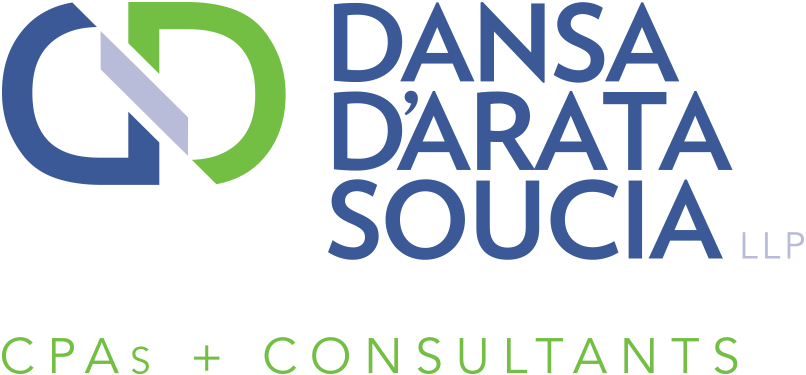TCJA temporarily lowers medical expense deduction threshold
 With rising health care costs, claiming whatever tax breaks related to health care that you can is more important than ever. But there’s a threshold for deducting medical expenses that may be hard to meet. Fortunately, the Tax Cuts and Jobs Act (TCJA) has temporarily reduced the threshold.
With rising health care costs, claiming whatever tax breaks related to health care that you can is more important than ever. But there’s a threshold for deducting medical expenses that may be hard to meet. Fortunately, the Tax Cuts and Jobs Act (TCJA) has temporarily reduced the threshold.
What expenses are eligible?
Medical expenses may be deductible if they’re “qualified.” Qualified medical expenses involve the costs of diagnosis, cure, mitigation, treatment or prevention of disease, and the costs for treatments affecting any part or function of the body. Examples include payments to physicians, dentists and other medical practitioners, as well as equipment, supplies, diagnostic devices and prescription drugs.
Mileage driven for health-care-related purposes is also deductible at a rate of 17 cents per mile for 2017 and 18 cents per mile for 2018. Health insurance and long-term care insurance premiums can also qualify, with certain limits.
Expenses reimbursed by insurance or paid with funds from a tax-advantaged account such as a Health Savings Account or Flexible Spending Account can’t be deducted. Likewise, health insurance premiums aren’t deductible if they’re taken out of your paycheck pretax.
The AGI threshold
Before 2013, you could claim an itemized deduction for qualified unreimbursed medical expenses paid for you, your spouse and your dependents, to the extent those expenses exceeded 7.5% of your adjusted gross income (AGI). AGI includes all of your taxable income items reduced by certain “above-the-line” deductions, such as those for deductible IRA contributions and student loan interest.
As part of the Affordable Care Act, a higher deduction threshold of 10% of AGI went into effect in 2014 for most taxpayers and was scheduled to go into effect in 2017 for taxpayers age 65 or older. But under the TCJA, the 7.5%-of-AGI deduction threshold now applies to all taxpayers for 2017 and 2018.
However, this lower threshold is temporary. Beginning January 1, 2019, the 10% threshold will apply to all taxpayers, including those over age 65, unless Congress takes additional action.
Consider “bunching” expenses into 2018
Because the threshold is scheduled to increase to 10% in 2019, you might benefit from accelerating deductible medical expenses into 2018, to the extent they’re within your control.
However, keep in mind that you have to itemize deductions to deduct medical expenses. Itemizing saves tax only if your total itemized deductions exceed your standard deduction. And with the TCJA’s near doubling of the standard deduction for 2018, many taxpayers who’ve typically itemized may no longer benefit from itemizing.
Contact us if you have questions about what expenses are eligible and whether you can qualify for a deduction on your 2017 tax return. We can also help you determine whether bunching medical expenses into 2018 will likely save you tax.
© 2018


 Natural disasters and other calamities can affect any company at any time. Depending on the type of business and its financial stability, a few weeks or months of lost income can leave it struggling to turn a profit indefinitely — or force ownership to sell or close. One way to guard against this predicament is through the purchase of business interruption insurance.
Natural disasters and other calamities can affect any company at any time. Depending on the type of business and its financial stability, a few weeks or months of lost income can leave it struggling to turn a profit indefinitely — or force ownership to sell or close. One way to guard against this predicament is through the purchase of business interruption insurance. Tax credits reduce tax liability dollar-for-dollar, potentially making them more valuable than deductions, which reduce only the amount of income subject to tax. Maximizing available credits is especially important now that the Tax Cuts and Jobs Act has reduced or eliminated some tax breaks for businesses. Two still-available tax credits are especially for small businesses that provide certain employee benefits.
Tax credits reduce tax liability dollar-for-dollar, potentially making them more valuable than deductions, which reduce only the amount of income subject to tax. Maximizing available credits is especially important now that the Tax Cuts and Jobs Act has reduced or eliminated some tax breaks for businesses. Two still-available tax credits are especially for small businesses that provide certain employee benefits. Every company, big or small, should have a mission statement. Why? When carefully conceived and well written, a mission statement can serve as a beacon to the world — letting everyone know what the business stands for and where it’s headed. It can build customer loyalty and mobilize people behind a common cause. And it can define the company’s collective personality, provide clear direction, and most of all, serve as a starting point for all of your marketing efforts. Here are some elements to consider when writing a mission statement:
Every company, big or small, should have a mission statement. Why? When carefully conceived and well written, a mission statement can serve as a beacon to the world — letting everyone know what the business stands for and where it’s headed. It can build customer loyalty and mobilize people behind a common cause. And it can define the company’s collective personality, provide clear direction, and most of all, serve as a starting point for all of your marketing efforts. Here are some elements to consider when writing a mission statement: Working from home has become commonplace. But just because you have a home office space doesn’t mean you can deduct expenses associated with it. And for 2018, even fewer taxpayers will be eligible for a home office deduction.
Working from home has become commonplace. But just because you have a home office space doesn’t mean you can deduct expenses associated with it. And for 2018, even fewer taxpayers will be eligible for a home office deduction. You’ve probably heard or read the term “big data” at least once in the past few years. Maybe your response was a sarcastic “big deal!” under the assumption that this high-tech concept applies only to large corporations. But this isn’t necessarily true. With so much software so widely available, companies of all sizes may be able to devise and implement big data strategies all their own.
You’ve probably heard or read the term “big data” at least once in the past few years. Maybe your response was a sarcastic “big deal!” under the assumption that this high-tech concept applies only to large corporations. But this isn’t necessarily true. With so much software so widely available, companies of all sizes may be able to devise and implement big data strategies all their own. Under the Tax Cuts and Jobs Act (TCJA), individual income tax rates generally go down for 2018 through 2025. But that doesn’t necessarily mean your income tax liability will go down. The TCJA also makes a lot of changes to tax breaks for individuals, reducing or eliminating some while expanding others. The total impact of all of these changes is what will ultimately determine whether you see reduced taxes. One interrelated group of changes affecting many taxpayers are those to personal exemptions, standard deductions and the child credit.
Under the Tax Cuts and Jobs Act (TCJA), individual income tax rates generally go down for 2018 through 2025. But that doesn’t necessarily mean your income tax liability will go down. The TCJA also makes a lot of changes to tax breaks for individuals, reducing or eliminating some while expanding others. The total impact of all of these changes is what will ultimately determine whether you see reduced taxes. One interrelated group of changes affecting many taxpayers are those to personal exemptions, standard deductions and the child credit. For many years, owners of small and midsize businesses looked at outsourcing much like some homeowners viewed hiring a cleaning person. That is, they saw it as a luxury. But no more — in today’s increasingly specialized economy, outsourcing has become a common way to cut costs and obtain expert assistance.
For many years, owners of small and midsize businesses looked at outsourcing much like some homeowners viewed hiring a cleaning person. That is, they saw it as a luxury. But no more — in today’s increasingly specialized economy, outsourcing has become a common way to cut costs and obtain expert assistance. The IRS has just announced that it will begin accepting 2017 income tax returns on January 29. You may be more concerned about the April 17 filing deadline, or even the extended deadline of October 15 (if you file for an extension by April 17). After all, why go through the hassle of filing your return earlier than you have to?
The IRS has just announced that it will begin accepting 2017 income tax returns on January 29. You may be more concerned about the April 17 filing deadline, or even the extended deadline of October 15 (if you file for an extension by April 17). After all, why go through the hassle of filing your return earlier than you have to? For many companies, there comes a time when owners must decide whether to renew a lease, move on to a different one or buy new (or pre-existing) space. In some cases, it’s a relatively easy decision. Maybe you’re happy where you are and feel like such a part of the local community that moving isn’t an option.
For many companies, there comes a time when owners must decide whether to renew a lease, move on to a different one or buy new (or pre-existing) space. In some cases, it’s a relatively easy decision. Maybe you’re happy where you are and feel like such a part of the local community that moving isn’t an option.